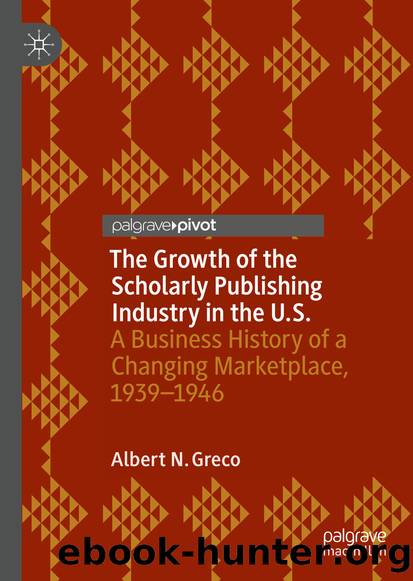The Growth of the Scholarly Publishing Industry in the U.S. by Albert N. Greco

Author:Albert N. Greco
Language: eng
Format: epub
ISBN: 9783319995496
Publisher: Springer International Publishing
“Atomic Cities” and Security
Groves’ policy was pretty direct; each scientist knew exactly what he or she needed to know, and nothing more. To many scientists, this policy undermined their belief in the free exchange of research.
Kiernan wrote that everyone involved in the Manhattan Project signed a document stating he or she would not release any information about the project; every incoming and outgoing mail was censored to make sure any references to atomic research or research locations were deleted, as were telephone calls.11 And Groves was the only individual who had a complete understanding of every aspect of the Manhattan Project; he insisted that secret research studies generated at the nuclear facilities were sent to various locations and, ultimately to Los Alamos, via armed military couriers.
This system of compartmentalization of information made sense to Groves. And Groves soon realized there were flaws in the system. “I had learned within a week or two of my assignment that the only known espionage was that conducted by the Russians against the Berkeley laboratory, using American Communist sympathizers… Naturally, we made every effort to find out before employing anyone whether there was anything in his background that would make him a possible source of danger.”12 Kiernan described the constant, overriding need for security. “People weren’t here [Oak Ridge] to grow and learn; they were here to do a job… There was no need to talk to anyone except those directly above or below you…Employees would be screened for a variety of infractions.”13
The early discussions about atomic research developments in the U.S. were shared with British officials, and this turned out to be a problem. The U.S. Department of Energy Office of History and Heritage Resources reported that “Soviet intelligence first learned of Anglo-American talk of an atomic bomb program in September 1941… The information likely came from John Cairncross, a member of the infamous ‘Cambridge Five’ spies in Britain… Donald Maclean also sent word of the potential for an atomic bomb to his Soviet handlers… Soviet intelligence headquarters in Moscow pressured their various American residencies to develop sources within the Manhattan Project… Klaus Fuchs first offered his services to Soviet intelligence in late 1941… Soviet intelligence lost contact with him in early 1944 but eventually found out that Fuchs had been reassigned to the bomb research and development laboratory at Los Alamos… Fuchs worked at the Theoretical Division at Los Alamos, and from there he passed to his Soviet handlers detailed information regarding atomic weapons design.”14
Download
This site does not store any files on its server. We only index and link to content provided by other sites. Please contact the content providers to delete copyright contents if any and email us, we'll remove relevant links or contents immediately.
Pale Blue Dot by Carl Sagan(4856)
The Rules Do Not Apply by Ariel Levy(4787)
Goodbye Paradise(3666)
Ogilvy on Advertising by David Ogilvy(3456)
Delivering Happiness by Tony Hsieh(3332)
Liar's Poker by Michael Lewis(3322)
Into Thin Air by Jon Krakauer(3261)
Purple Cow by Seth Godin(3107)
Rogue Trader by Leeson Nick(2945)
The Social Psychology of Inequality by Unknown(2899)
The Airbnb Story by Leigh Gallagher(2751)
4 - Harry Potter and the Goblet of Fire by J.K. Rowling(2612)
The Mind Map Book by Tony Buzan(2472)
Bossypants by Tina Fey(2422)
Claridge's: The Cookbook by Nail Martyn & Erickson Meredith(2317)
All the President's Men by Carl Bernstein & Bob Woodward(2299)
Six Billion Shoppers by Porter Erisman(2241)
Master of the Game by Sidney Sheldon(2204)
Alibaba by Duncan Clark(2001)
